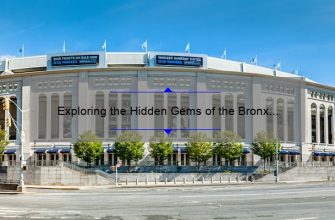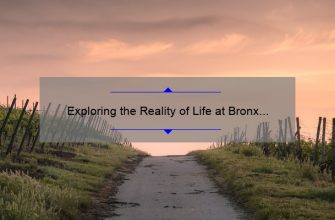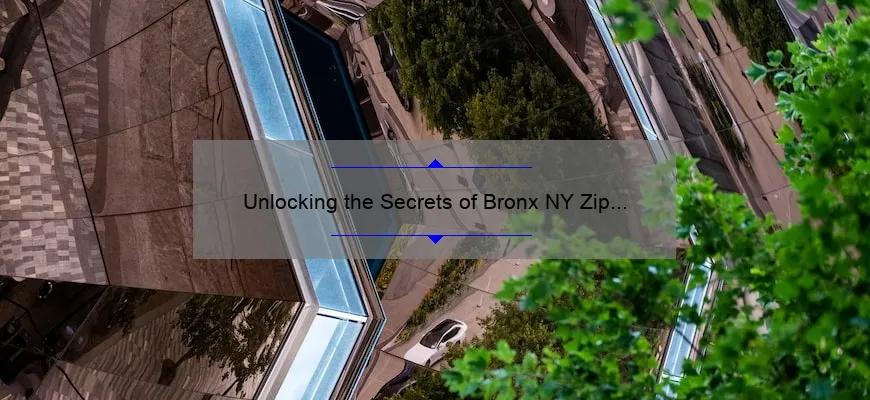- What is the Bronx part of NYC?
- Step-by-Step Explanation on How the Bronx Became a Borough of NYC
- Frequently Asked Questions: Is the Bronx an Independent City or Part of NYC?
- Top 5 Facts You Need to Know About the Bronx’s Connection to NYC
- How Being Part of NYC Has Impacted the Development of the Bronx
- Controversies and Debates Surrounding Whether the Bronx is Truly Part of NYC
- Understanding the Historical Significance Behind Making The Bronx A Borough Of New York City
- Table with useful data:
- Information from an expert
- Historical fact:
What is the Bronx part of NYC?
The Bronx is one of the five boroughs that make up New York City.
- It’s located in the northern part of the city and is known for its vibrant culture, history, and landmarks such as Yankee Stadium and the Bronx Zoo.
- The population of the Bronx is diverse, with a mix of different ethnicities and cultures that contribute to its unique identity within New York City.
Step-by-Step Explanation on How the Bronx Became a Borough of NYC
The Bronx has a rich history that dates back to the early 1600s when it was inhabited by the Lenape people. The name “Bronx” was derived from Jonas Bronck, a Dutch settler who bought land in the area in 1639. Fast forward to the late 1800s and early 1900s, and the Bronx had become an industrial powerhouse with a growing population.
However, it wasn’t until January 1, 1898, that the Bronx became a borough of New York City. At that time, New York City consisted of just Manhattan and a few smaller outlying areas known as Brooklyn, Queens, Staten Island, and the Bronx. The city’s leaders wanted to consolidate these areas into one metropolis to better manage resources and provide more unified governance.
The process of consolidating took several years and involved political negotiations, legal battles, and public referendums. In fact, it wasn’t until November 3rd of 1896 that an official vote was held on whether or not the consolidation should take place. Overwhelmingly passed in favor (by nearly ten thousand votes), officials pushed forward with their plans.
On January 1st of 1898 – deemed “Consolidation Day” – all five boroughs were officially united under one city government; marking an end to local independence for The Bronx (and its neighboring city components). While many saw this transition as positive (consolidation allowed for shared services like transportation, utilities etc., enhancing overall infrastructure), some residents felt they lost their distinct identities by being “absorbed” into New York City’s larger framework.
Still today – over a century later – remnants of pre-consolidated times can be seen throughout The Bronx; from historic landmarks like Van Cortlandt Park (said to have been inhabited by Native Americans well before Dutch settlers arrived) & Yankee Stadium (The house of famed baseball team and cultural icon, The Bronx Bombers) to the block structures of famed inner-city neighborhoods such as Mott Haven, Morris Park, Fordham, and Pelham Bay.
In conclusion – though becoming its own borough within New York City may have resulted in some loss for Bronx residents (loss of autonomy; merging with previously-surrounding cities like Westchester County), it jointly has contributed greatly to New York’s striking economic and social prosperity.
Frequently Asked Questions: Is the Bronx an Independent City or Part of NYC?
The Bronx is a borough of New York City. It is one of five boroughs that make up the city along with Manhattan, Brooklyn, Queens, and Staten Island. However, this question is not uncommon. Some people tend to think of the Bronx as being an independent city due to its unique character and history.
The confusion may arise from the fact that before 1874, the area now known as the Bronx was made up of several different towns and villages. In 1874, parts of these towns were consolidated into what was known as the Town of Westchester. Then in 1895, a portion of the Town of Westchester became known as The Bronx (named after Swedish settler Jonas Bronck) when it was annexed by New York City.
Since then, The Bronx has been an integral part of New York City’s geography and culture. Despite having its own distinct neighborhoods such as Parkchester or Spuyten Duyvil, it is bound by common public services including schools and transportation networks like every other borough in NYC.
Furthermore, since World War II and especially during its growth phase approaching mid-twentieth century The Bronx became increasingly industrialized hence projecting an image distinct from Manhattan’s bright lights making it legendary on its own rights in American popular culture: contributing to jazz (“Bronx Boogie”), soul (“The show”), rap music (“Hip Hop”) , cinema through independent film production companies such like “Blacksploitation” genre movies among many others alike
In conclusion – The Bronx is definitely NOT an independent city but a vibrant part of NYC that has its own special place within it.The historical uniqueness associated with famous American identity makers derived from The Borough merely reinforces its relevance within United States cultural identity beyond borders marking landmarks throughout centuries which contribute to visitors discovering brand new perspectives about New York!
Top 5 Facts You Need to Know About the Bronx’s Connection to NYC
The Bronx is undoubtedly one of the most vibrant boroughs in New York City. However, what many people don’t know about it is that it has a deep-rooted connection to the city that goes beyond its reputation for being home to Yankee Stadium and hosting the annual New York International Auto Show. Here are five facts you need to know about the Bronx’s connection to NYC:
1. The Bronx was named after Jonas Bronck
Bronx Borough actually takes its name from Jonas Bronck, a Swedish-born settler who purchased land in the area back in 1639 and built his own farmhouse which still stands today. His farmhouse was known as “Bronck’s Land,” eventually leading to the name “The Bronx.”
2. The birthplace of hip-hop culture
Without a doubt, one of the most significant cultural movements of our time is Hip Hop music and dance which was created here in The Bronx! Although there have been various claims regarding where hip hop originated from, many agree that it all began at a neighborhood house party in August 1973 set up by DJ Kool Herc.
3. Highbridge Park is among NYC’s architectural wonders
Highbridge Park’s iconic Water Tower (now used as an office space) and stretched-out Aqueduct Walk is considered one of New York City’s foremost monuments and architectural marvels dating all the way back nearly half a century.
4. Home to National Historic Landmark: Edgar Allan Poe Cottage
Edgar Allan Poe spent several years living in The Bronx during his life; it was here where he wrote some of his finest works like Annabel Lee, Ulalume, Lenore, and more. Today you can visit Poe Cottage- which has since become a National Historic Landmark!
5. One Of America’s Oldest Zoos Resides In The Bronx
A surprise fact altogether- with over 265-acres; it’s not only a popular attraction but also is one of the oldest zoos in North America. Welcoming families, friends, tourists, and students all year round, the Bronx Zoo is also home to thousands of animal species and various interactive exhibits.
In conclusion, these are just five among many other fascinating facts regarding The Bronx’s relation with New York City. From being Hip-Hop’s birthplace to having historical landmarks dating back to several hundred years, it’s no surprise we can’t resist feeling a certain excitement standing in its aura today!
How Being Part of NYC Has Impacted the Development of the Bronx
The Bronx has always been an exciting place to be, but thanks to its close proximity to one of the most vibrant cities in the world, New York City, it has undergone a significant transformation that has made it a destination for many. The borough is a melting pot of different cultures, traditions and lifestyles that gives it a unique identity even within NYC. In addition, its relationship with other neighborhoods of New York City has greatly affected its development over time.
Bronx residents bear witness to the influx of people coming to their borough every single day from surrounding cities looking for opportunities that are scarce in their own neighborhoods. Spectacular developments such as Yankee Stadium and The Bronx Zoo have also contributed generously to this influx. These steady streams of commuter traffic and tourists have brought economic growth and prosperity that has helped improve different spheres of life including commerce, infrastructure and real estate.
The real estate market in the Bronx is booming with more people moving here from other parts of the country or upgrading their current living arrangements within it. This can be attributed largely to the fact that New York City’s expensive housing markets are driving many people out to areas like the Bronx where they can still enjoy city living at affordable prices while making just short commutes for work or leisure.
The rapid development of modern amenities around entertainment spots as well as improved infrastructure specifically along major streets makes getting around much easier than ever before. Thanks to ongoing renovation projects by city officials and private investors alike, subways connect tirelessly every part of NYC which opens up virtually limitless possibilities when contemplating places to work or invest in – especially those situated near transport hubs.
Naturally, all these developments haven’t come without challenges too! Some challenges such as gentrification – though born from good intentions like affordable housing programs – often tend towards exclusionary zoning rules tied into higher property values that alienate long-time residents who cannot afford them anymore.
However there exists equal measure opportunity created by this wave which should not be understated. With more people coming into the Bronx and surrounding areas, there is a growing demand for local restaurants, retail establishments, healthcare providers and many other service providers. These are among important boosters of local economies as well as job creation which should culminate to an even stronger Bronx community living standard in future – one that is more loyal to its inhabitants.
In conclusion, being part of New York has drastically changed the landscape of the Bronx in ways we cannot comprehend fully. The borough now enjoys modern infrastructure amenities and improved standards of living thanks to city planning efforts that have been aimed at making it appeal to both residents and visitors of all backgrounds. While challenges still exist regarding creating inclusive real estate policies that cater for everyone’s needs equally – the overall picture is quite promising on its impact towards future development as a vibrant functioning NYC community living space; one set on pursuing intelligent smart growth strategies en-route becoming an integrated function within our dynamic city’s social-economic makeup today and tomorrow!
Controversies and Debates Surrounding Whether the Bronx is Truly Part of NYC
The Bronx is one of the most iconic and historic neighborhoods in New York City. With a rich cultural heritage, stunning architecture, and legendary landmarks like Yankee Stadium, it’s easy to see why so many people identify the Bronx as an integral part of NYC.
However, there are also many controversies and debates surrounding whether the Bronx is truly a part of NYC. Some people argue that the borough has always been treated as an afterthought by city officials and residents alike, leading to feelings of exclusion and resentment among its inhabitants.
One of the key points in this debate is the fact that the Bronx has a distinct character and identity that sets it apart from other neighborhoods in NYC. From its vibrant street art scene to its unique blend of African American, Latino, and Italian cultures, there’s no denying that the Bronx has a flavor all its own.
However, this uniqueness can also be seen as a double-edged sword. While some view it as a strength that should be celebrated and embraced by the city at large, others feel that it contributes to a sense of isolation and separation from other parts of NYC.
Another point of contention in this debate is how much attention and resources are allocated to the Bronx compared to other areas of NYC. Some argue that historically marginalized communities like those found in much of the South Bronx have long been neglected by city officials, leading to issues like poverty, crime, and inadequate access to essential services like healthcare, education, and transportation.
Others counter this argument by pointing out recent development projects aimed at revitalizing various parts of the borough such as renovation work on existing housing units or developing new commercial spaces which they say prove that The Department for Housing Preservation (NYC HPD) along with private non-profit organizations work hard towards equity while investing heavily in The Bronx borough for better opportunities.
Ultimately though regardless what opinions or speculations may circulate on social media platforms about any particular neighborhood including The Bronx; We cannot deny that it has played an integral role in shaping the city’s cultural landscape and defining its identity. From hip hop to fashion to food, the Bronx has made a lasting impact on the world at large.
All said and done, there is no clear-cut answer when it comes to whether The Bronx is truly part of NYC or not. While it may have its own unique identity and challenges that set it apart from other neighborhoods, one thing is for certain: The Bronx will always be an essential piece of New York City’s rich tapestry.
Understanding the Historical Significance Behind Making The Bronx A Borough Of New York City
The Bronx borough of New York City is one of the most iconic neighborhoods in the world. Historically, it was a hub for culture, music and art during the 1970s. Many famous American artists such as Grandmaster Flash, Afrika Bambaataa, and Kool Herc originated from The Bronx. While today it has transformed into a modern metropolis offering residents access to museums, restaurants, and sports venues, understanding the borough’s historical significance is essential.
The history of The Bronx can be traced back to settlements by various indigenous tribes across North America. Colonization began in 1639 by Jonas Bronck an immigrant from Sweden who established a farm that would later be known as “Bronck’s Land.” The land remained untouched until New York City became incorporated in 1898 when Morrisania, Westchester and Eastchester were merged together becoming what we know today as “The Bronx.”
During the mid-19th century, The Bronx emerged quickly after receiving links through major railroads connecting Manhattan to other metropolitan areas. It developed distinct neighborhoods consisting of Italian Americans in Belmont district along Arthur Avenue and also Jewish families in Kingsbridge where recent immigrants from Europe had settled.
The area’s growth progressed rapidly throughout the early 20th century due to industrialization with factories emerging and drawing diverse immigrant groups like Hispanic-Americans relocating to Soundview or Parkchester adding to its cultural diversity.
However post World War II brought significant destructions which depleted resources within The Bronx mainly because many banks refused financial services resulting in high levels of poverty throughout the borough. This allowed for real estate speculators to exploit properties leading landlords abandoning buildings leaving them abandoned and decaying; subsequently transforming them into slums among other localities suffering significant challenges such as crime rates exceeding any other vicinity across America during this time.
In response, programs driven by community activists alongside government intervention helped restore order progressively leading towards blooming industries which began revitalizing specific localities such as South Bronx transforming the area on a molecular level. The deterioration of The Bronx during the 70s played a significant role in NYC’s economic decline, however, restoration and focus towards its rehabilitation acted as one of the initial steps that ultimately resuscitated New York City.
In conclusion, Making The Bronx a borough of New York City undoubtedly shaped America’s history significantly over various centuries. With an ever-diversifying population incorporating critical contributions within social and cultural aspects that ultimately influenced American culture as we know it today. Understanding its historical significance can provide valuable context into how individuals may interpret moments that have changed the course of America’s trajectory specifically focusing on cities that provided growth and inspired ingenuity and innovation – like The Bronx.
Table with useful data:
| Borough | City |
|---|---|
| Bronx | New York City |
| Brooklyn | New York City |
| Manhattan | New York City |
| Queens | New York City |
| Staten Island | New York City |
As we can see from the table above, the Bronx is indeed a borough of New York City.
Information from an expert
Yes, the Bronx is one of the five boroughs that make up the city of New York. It is located in the northern part of the city and is bordered by Westchester County to the north. The Bronx has a rich history and cultural significance, known for landmarks such as Yankee Stadium and the Bronx Zoo. Additionally, it has a diverse population with various ethnicities and languages spoken. As an expert in geography and urban studies, I can confidently confirm that the Bronx is indeed part of New York City.
Historical fact:
The Bronx is a borough of New York City and has been since its annexation by the city in 1898.








